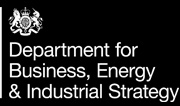
NAA Member News: Businesswise Solutions – From Peaks to Troughs: Unravelling the Wholesale Energy Market
The wholesale energy market is partly responsible for determining the cost of energy for businesses and consumers alike.
Over the last two decades, non-wholesale costs have been responsible for driving energy price inflation. These ‘Non-Commodity Costs’ have been the main headache for businesses, contributing to well above Cost Price Index (CPI) year on year increases for energy.
Since 2021, however, wholesale costs have made a rather unwelcome return to the headlines. The wholesale energy markets have seen unprecedented highs paired with significant volatility since the conflict in Ukraine began in late 2021. The scale of the peaks and levels of volatility make any period prior to them look like a calm sea of tranquillity.
The challenges faced by businesses have been huge, and, despite government interventions, many are still living with the challenges. But while there is a silver lining with prices starting to come back down close to ‘normal ranges’, we are still a long way from things being back to the way they were pre-2021.
Seasonal Price Movements
The graph here shows the seasonal wholesale price of gas for the summer seasons for 2024 and 2025, and how those prices have developed over the last twelve months. You can clearly see a drive back towards pre 2021 ranges that has been happening since the last quarter of 2023. The same chart for the winter seasons for gas shows a very similar pattern, as do the seasonal charts for both winter and summer for power.
Whilst this all looks like good news, it’s worth noting that we’re only just reaching the highest point that the wholesale market has traded at any time prior to 2021 – these levels would have previously been met with grave concern by businesses looking at setting budgets and maintaining profitability.
So what causes wholesale prices to increase?
- Global events – Geopolitical events and global developments have had a profound impact on energy costs. One notable example is the Russia-Ukraine conflict, where Russia’s invasion of Ukraine sent shockwaves through the global energy markets, leading to heightened volatility and increased prices. Since then, we’ve also had recent events in the Middle East that have resulted in attacks on ships transiting the Red Sea.
- Supply shortages – Anything from disruptions to North Sea output, issues with French nuclear power stations, competition with Asia for global LNG supply, and periods of low renewable generations have all affected supply over the past two years.
- Demand side – Periods of cooler weather tend to push up demand significantly, which is a particular risk to winter prices, though Europe has responded to the loss of Russian gas by successfully reducing demand over the last 12 months.
Any one of these events can send prices rocketing, and as market prices change throughout the day depending on supply and demand, it’s important for businesses to stay vigilant and monitor the markets, especially when needing to enter into a new contract.
The Energy Suppliers Credit Crunch
One of the biggest impacts on businesses, aside from the high energy costs, is the impact these high energy costs have on their ability to secure the appropriate credit for a supply contract in the first place. At pre-2021 levels, a business spending around £250k a month on energy would have had to pass a credit check at this level, with the majority meeting the threshold without requiring a security deposit.
Currently, the same business is now facing a credit check at a level of £350k or even £400k per month spend level, and many of the supplier credit models are not built to factor in this increased wholesale cost. This results in far more businesses needing to provide security deposits, something that many businesses have never even had to consider and something that could put a huge bump into a business’s cash flow.
The best way to navigate the energy markets
The key to avoiding the pitfalls of sudden price spikes lies in effective energy procurement and contract management strategies. Energy prices are constantly changing, from short term intraday movements to longer term seasonal shifts, so the type of strategy you deploy has a significant impact on the rates you pay.
Short term strategies simply deal with what is happening in front of you right now, locking in that next contract at the best possible rate available. Our opinion is that while short term strategies can get you out of trouble when you’re in it, longer term strategies that take a more measured approach and aim to deliver smoother season to season pricing. For most businesses, this approach is more beneficial, as it helps them to plan ahead and avoid getting in trouble in the first place.
Going long term doesn’t mean locking in the current high rates way into the future, it’s simply having those seasons under management, so you’re ready to act should the wholesale markets do something that puts achieving financial budgets at risk.
Exploring different trading strategies
Once you’ve determined whether you’re playing the long or short game, you can begin looking at trading strategies. Post-energy crisis, strategies that may have worked or been considered low risk, may not be appropriate for dealing with the uncertainties we face at present. There are several strategies you can consider, including the seven listed here.
Waterfall / Hedging timetable strategies: These give specific levels or range of levels each period needs to be at, or within a set point before delivery.
Cap strategy, also known as Capital/Value at Risk: Sets a maximum level that must be achieved for each period. This is usually set at a percentage or fixed amount above the market when set.
Day/Ahead Spot: Leaving volume to within month markets, this strategy is usually used in conjunction with other strategies.
Triggers: This strategy uses agreed trigger levels to determine purchases. Often used in conjunction with other strategies.
Price setting alignment: This aligns forward hedges to periods in which businesses want to fix or set prices with their onward customers, eliminating price risk for the period.
Market average: Purchases are made at either regular intervals or agreed price level movements with the aim of smoothing the final price to achieve close to where the market has averaged over a certain period prior to delivery.
Combination: Volume can be split into multiple strategies, or multiple strategies can be applied to purchasing.
Summary
The wholesale energy markets continue to be a changing and challenging environment for businesses seeking to manage their energy costs effectively. While prices have shown signs of falling, the impact of global events and supply challenges has kept them higher than pre-2021 levels.
Having an expert trader, in-house, or third-party will provide invaluable insights into market trends and help businesses make informed decisions. Before making any trades, it’s important to discuss and agree on the business’ appetite for risk and put risk management measures in place.
Traders offer advice on when to secure energy contracts, taking advantage of favourable market conditions, and avoiding potential pitfalls. This proactive approach ensures that businesses do not find themselves trapped in long-term fixed contracts with high energy costs.
Learn more about the energy markets and keep track of future price levels with the energy markets dashboard.
Author: Colin Gordon, Head of Trading & Risk Management, Businesswise Solutions
About Businesswise Solutions:
Businesswise Solutions is an energy management consultancy specialising in supporting energy-intensive businesses with energy procurement, energy management, and sustainability challenges.





